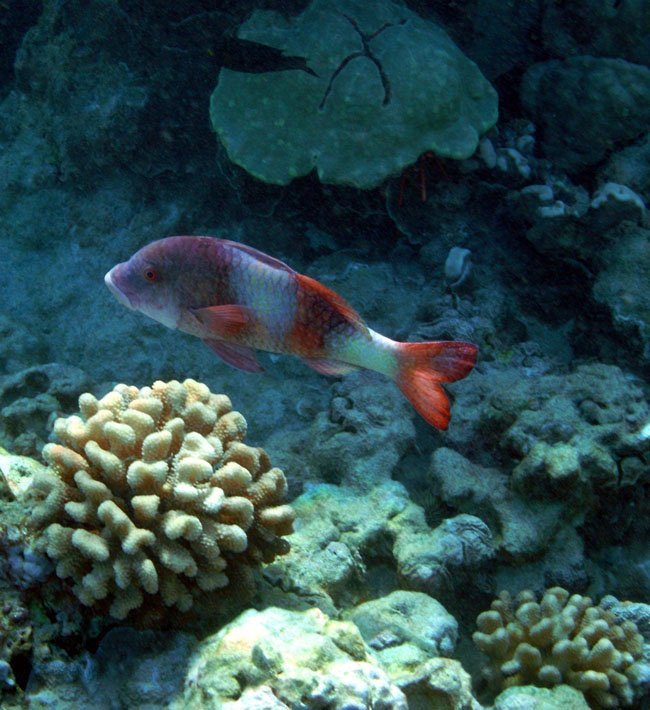Goatfishes

Goatfishes (Mullidae) Overview
Goatfishes can easily be spotted while snorkeling over a sandy ocean bottom. They can be recognized by their barbels, which they use to brush over the sand to find worms, molluscs and other invertebrates. Some of them also use their barbels to get to shrimps and crabs that are hiding in the reef.
All goatfish have a forked tail and many can change their color very quickly. Most of the time they stick to the ocean bottom, but several Hawaii species can be observed in midwater during daylight hours.
There is no Hawaiian name for goatfishes that includes all species. The ones that have one or more body-length stripes are known as weke (meaning “to open”) and weke that are under seven inches are called 'oama. Other goatfishes are known as moano.
Frequently Asked Questions
How can I identify a goatfish?
Goatfishes are easily recognized by their chin barbels - whisker-like appendages they use to search for food in the sand. They also have forked tails and often display stripe patterns along their bodies.
What are the barbels on a goatfish used for?
The barbels are sensory organs that help goatfishes detect prey buried in the sand, such as worms, crustaceans, and mollusks. They sweep them along the seafloor to locate food.
Can goatfishes change color?
Yes, many goatfish species can change color rapidly to blend in with their surroundings or to communicate with other fish. This helps them avoid predators and adapt to their environment.
What are the Hawaiian names for goatfishes?
Goatfishes with stripes are called weke, while juveniles under seven inches are known as 'oama. Other species are referred to as moano. There is no single name that includes all goatfishes.
Where can I see goatfishes in Hawaii?
Goatfishes are commonly seen while snorkeling or diving in sandy or mixed reef areas. They are often observed moving slowly along the ocean floor or hovering just above it in search of food.








